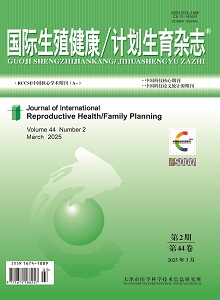Obejective: To study the medication rules and potential mechanism of traditional Chinese medicine (TCM) menstrual cycle regulation method in the treatment of ovulatory dysfunction infertility (ODI), based on data mining, network pharmacology and molecular docking. Methods: Literature on TCM menstrual cycle regulation for ODI was retrieved from the China National Knowledge Infrastructure, Wanfang Database, VIP Chinese Periodicals, and Chinese biomedical literature service system. Medication patterns were summarized, and core drug pairs were analyzed using network pharmacology. The molecular docking was employed for validation. Results: This study included a total of 133 references, covering 464 prescriptions involving 154 types of TCMs with 19 categories of therapeutic effects. During the menstrual phase, the primary medicines are warm, acrid, and liver-meridian-involved blood-activating and stasis-removing medicines, blood-tonifying medicines, and qi-regulating medicines, etc. The high-frequency TCMs include Angelica sinensis (Danggui), Ligusticum chuanxiong (Chuanxiong), and Cyperi Rhizoma (Xiangfu), etc. The commonly used medicine pairs are Angelica sinensis, Paeoniae Rubra (Chishao), and Cyperi Rhizoma. In the follicular phase, the main medicines are warm, sweet, and meridian-involved yang-supplementing medicines, blood-tonifying medicines, and blood-activating and stasis-removing medicines, etc. The high-frequency TCMs include Cuscutae Semen (Tusizi), Angelica sinensis, and Rehmanniae Preparata (Shudi Huang), etc. The commonly used medicine pairs are Cuscutae Semen and Polygoni Multiflori (Heshouwu). During the ovulation phase, the main medicines are warm, acrid, and liver-meridian-involved blood-activating and stasis-removing medicines, yang-supplementing medicines, and blood-tonifying medicines, etc. The high-frequency TCMs include Angelica sinensis, Cyperi Rhizoma, and Cuscutae Semen, etc. The commonly used medicine pairs are Angelica sinensis, Achyranthis Bidentatae (Niuxi), and Ligusticum chuanxiong. The main components in the above three phases include Luteolin, Quercetin, and Emodin, etc., and the core genes for treating ovulatory infertility are AKT1, IL-6, TNF, etc. The main pathways include the pathways related to cancer, fluid shear stress and atherosclerosis, as well as the AGE/RAGE signaling pathway in diabetic complications, etc. In the luteal phase, the main medicines are warm, sweet, and liver-meridian-involved yang-supplementing medicines, blood-tonifying medicines, and qi-supplementing medicines, etc. The high-frequency TCMs include Cuscutae Semen, Rehmanniae Preparata, and Angelica sinensis, etc. The commonly used medicine pairs are Angelica sinensis and Ligusticum chuanxiong. The main components are Sitosterol, Linoleate Ethyl Ester, Myricetin, etc., and the core genes are ESR1, CASP3, PTGS2, etc. The main pathways are the pathways related to cancer, estrogen signaling pathways, and chemical carcinogenesis-receptor activation, etc. Molecular docking verified that the main active components have good binding ability with key targets. Among them, the binding energy of luteolin with TNF during the menstrual period, emodin with TP53 during the follicular phase, quercetin with TNF during the ovulation period, and ligustrazine with PTGS2 during the luteal phase is the smallest. Conclusions: The core drug pairs in each phase of TCM menstrual cycle regulation affect mutiple pathways by regulating key targets, intervening in the treatment mechanisms of ODI.

